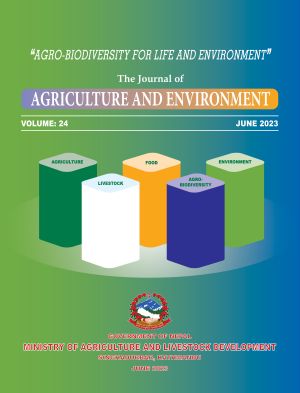Molecular Identification of Coffea Arabica Varieties in Nepal: Insights from Phylogenetic Analysis
DOI:
https://doi.org/10.3126/aej.v24i01.58187Keywords:
DNA Isolation, gene sequencing, internal transcribed spacers (ITS), polymerase chain reaction (PCR), phylogenetic treeAbstract
This study aimed to identify and characterize the coffee varieties cultivated in Nepal using molecular phylogenetic analysis. The molecular identification and genetic relationship of twenty five coffee varieties were collected from the Nepal Coffee Development Center, Gulmi, Nepal. DNA was isolated from leaf tissue, and Internal Transcribed Spacers Region (ITS)-specific PCR was performed, followed by sequencing and phylogenetic tree construction. BLASTN was performed to identify the similarities with the sequences of the National Center for Biotechnology Information (NCBI) Database. Evolutionary divergence between the sequences was computed using Maximum Composite Likelihood Model. Sequences were analyzed using Maximum Likelihood Model and Tamura-Nei model to construct molecular phylogeny. BLASTN and molecular phylogeny confirm all the samples to be Coffea arabica. Evolutionary divergence in pairwise comparison was found to be 0% to 4.3%. Divergence of 4.3% was detected between CDC-S21 and CDC-S73. With this, we identified the coffee samples to be C. arabica and we also computed relatedness among our varieties.




